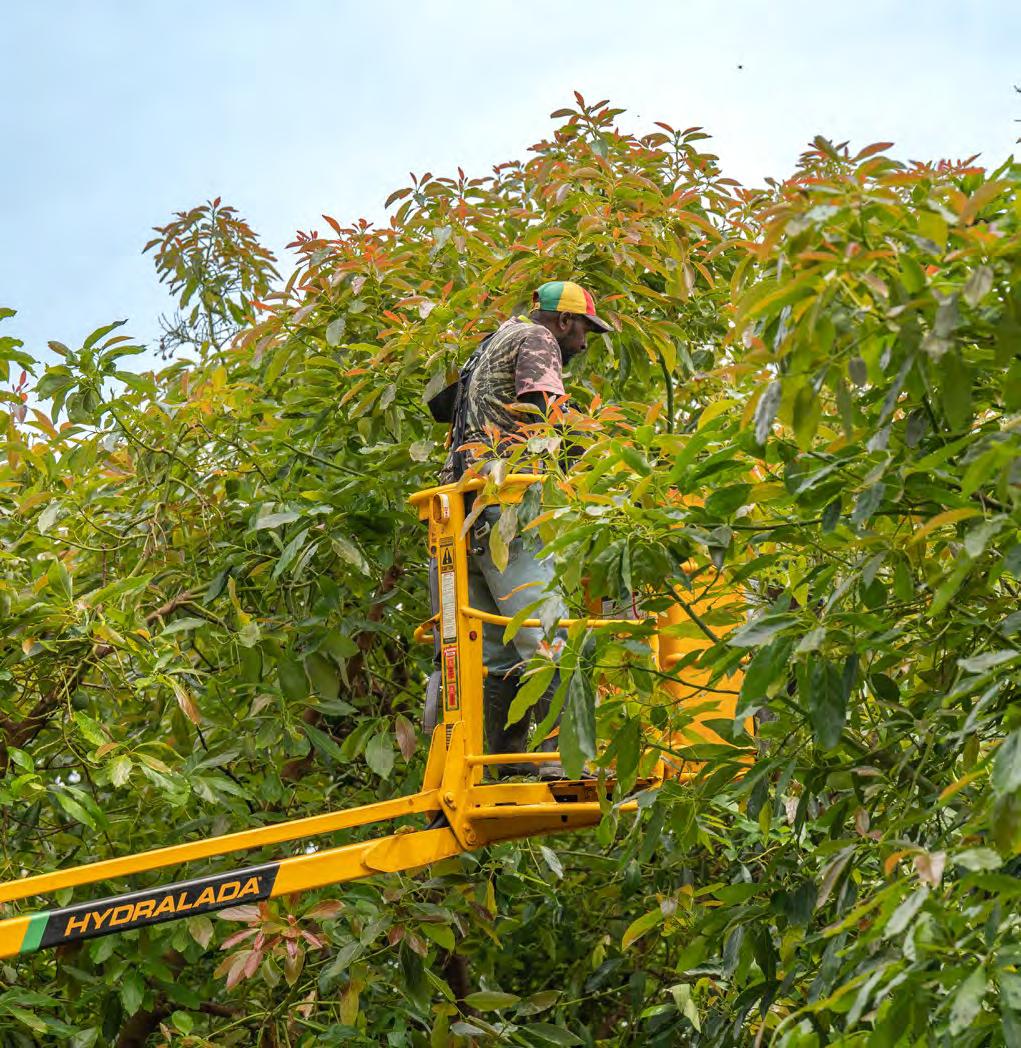
1 minute read
From tree to plate — an avocado’s journey
from Segment magazine 4
An avocado flower. ‘Hass’ avocado flowers alternate between being male (producing pollen) and being female (receptive to pollen) at different times on different days. Under ideal conditions, there will be both male and female flowers open at the same time to ensure cross-over of pollen. A mature avocado tree can produce about one million flowers each year.
not tend to produce large crops one year and smaller crops the next year. Scientists are investigating ways to reduce this irregular bearing, to maintain more predictable crop volumes year-on-year.
Advertisement
Aso-called ‘food explorer’, botanist Fairchild traversed the globe for the US Department of Agriculture, seeking out new plants that could be introduced to American growers and consumers. Just a few years later, in the early 1920s, the first commercial avocado orchard was established in Aotearoa New Zealand from seeds produced in California.
Avocados originated in central America, where most avocados are still grown today. By contrast, Aotearoa New Zealand produces just 2% of the global supply of avocados. However, the consistent high quality of avocados produced on our 4,000 hectares of avocado trees creates high demand in export markets, particularly in Asia.
Whether served on toast, in a burger, as guacamole, or topping sushi, the avocado is a staple of the Kiwi diet.

Maturing avocados hang from the tree. Avocados are ready for harvest between September and April in Aotearoa New Zealand, and begin to ripen when removed from the tree. Avocados harvested later in the season have more developed taste and consumer appeal, but also run greater risk of damage from late summer storms.


Scientist Phil Elmer samples an orchard for the presence of fruit rots. Postharvest fruit rots, the black/brown areas which develop when the fruit are ripe and ready to eat, are the biggest issue affecting avocado quality and consumer appeal. The MPI-funded AvoVantage project, aimed at improving avocado quality, has identified orchard factors that can reduce postharvest rots after avocados are harvested and cool-stored.

Avocado trees can grow up to 10 metres tall and the fruit are harvested by hand-picking — in commercial orchards, hydraulic harvesting machines enable the harvester to pick quickly.

A tractor gathers bins of harvested avocados. The average avocado harvest is about 11 tonnes of fruit per hectare, with some orchards harvesting up to 59 tonnes per hectare.

Avocados are sorted in a packhouse. Once harvested, avocados are sorted by size and to remove any with visible damage. Avocados are then packed into trays for export, primarily by sea freight in refrigerated containers.

A fresh avocado is prepared for eating. Consumers in more than 25 countries around the world enjoy eating New Zealand avocados.









